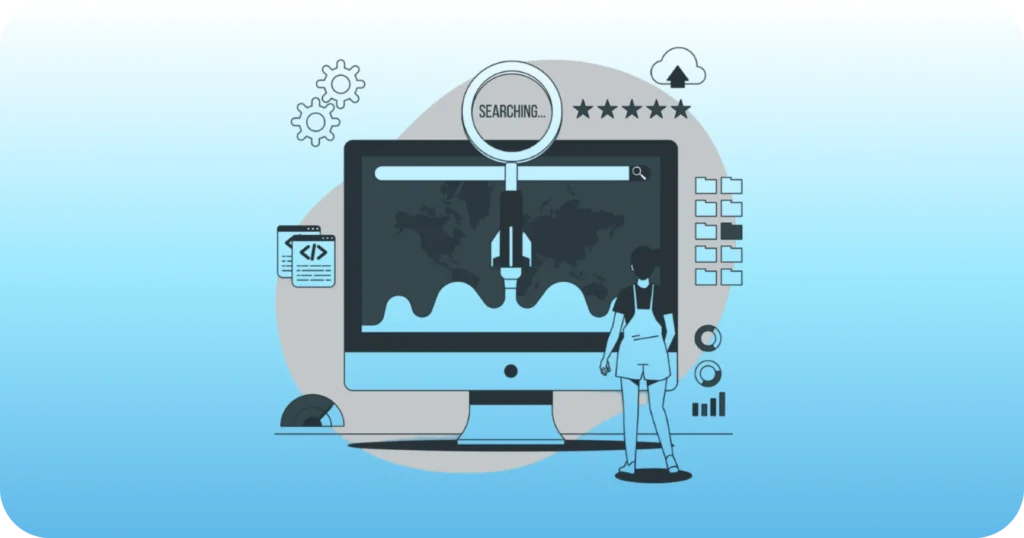In today’s highly competitive digital landscape, generating leads organically is crucial for sustainable SaaS growth. One of the most effective, long-term methods to achieve this is through SEO for SaaS.
This blog explores how SEO for SaaS businesses can be a lead generation powerhouse, uncovering strategies that can drive qualified traffic and increase conversions.
💡 Why SEO for SaaS Matters
SaaS products solve specific problems, and your ideal customers are searching online for those solutions. If your product doesn’t appear in search results, you’re missing out on potential leads.
SEO for SaaS is not just about rankings—it’s about creating visibility for every stage of the customer journey, from awareness to decision.
🛠️ Step-by-Step SEO Strategy for SaaS Lead Generation
1. Keyword Research Based on Intent
Understanding what your users are searching for is step one. Use tools like:
- Google Keyword Planner
- Ahrefs
- SEMrush
Focus on high-intent keywords like:
- “Best CRM for startups”
- “Email automation tool for eCommerce”
- “Project management SaaS for small teams”
Aim for a mix of top-funnel (TOFU), middle-funnel (MOFU), and bottom-funnel (BOFU) keywords. This layered approach ensures your SEO for SaaS strategy captures leads at all awareness stages.
2. Optimize Your Website for On-Page SEO
Your SaaS website should be optimized for:
- Fast load speed
- Mobile responsiveness
- Structured data
- Meta tags with your SEO for SaaS keywords
Use keyword variations naturally in:
- Headings (H1, H2, H3)
- Image ALT texts
- URLs
- Internal linking
- First 100 words of content
Maintain around 3% keyword density of your main focus keyword, “SEO for SaaS,” to ensure it ranks without keyword stuffing.
3. Create High-Quality, SEO-Friendly Content
Blogging is key. Write content that solves problems:
- Tutorials on using your SaaS
- Comparison posts (you vs competitors)
- Case studies of current customers
- SEO-rich FAQs
Every blog should target a specific keyword, answer a question, and include CTAs that push users toward free trials or demos.
4. Build Backlinks from SaaS-Relevant Sources
To increase your domain authority and rank better for SEO for SaaS, earn quality backlinks from:
- Review websites (G2, Capterra)
- Niche tech blogs
- Guest posts on SaaS communities
- Product Hunt discussions
Backlinks signal trust to search engines, helping your pages climb SERPs faster.
5. Use Conversion Rate Optimization (CRO) with SEO
It’s not just about traffic—it’s about converting traffic into leads. Your landing pages should:
- Be optimized for the same SEO for SaaS keyword
- Include social proof (testimonials, trust badges)
- Offer a clear CTA (demo, trial, contact)
- Use heatmaps (like Hotjar) to analyze behavior and optimize accordingly
6. Track SEO KPIs to Refine Strategy
Use tools like Google Analytics and Search Console to track:
- Organic traffic
- Bounce rates
- Keyword rankings
- Pages per session
- Conversions from organic traffic
These insights help you understand what’s working and what needs tweaking in your SEO for SaaS strategy.
📈 Examples of SaaS Companies Winning with SEO
- HubSpot: Dominates with content marketing and pillar pages
- Notion: Ranks for tutorials, use cases, and templates
- Zapier: Owns thousands of integration-based keywords
They all use SEO not as an afterthought, but as a core growth channel.
🔚 Final Thoughts
Investing in SEO for SaaS is not a “nice-to-have”—it’s a must-have for scalable and predictable lead generation. With consistent effort in keyword targeting, content creation, technical optimization, and backlinking, you’ll build a funnel that works 24/7 without burning ad budgets.
If you’re ready to unlock the power of SEO for your SaaS business, AppFillip can help. Our SaaS SEO experts specialize in building strategies that drive real business growth.
📞 Need Help with SEO for SaaS?
Let AppFillip be your partner in lead generation success.
Contact Us to boost your SaaS visibility and conversions.



